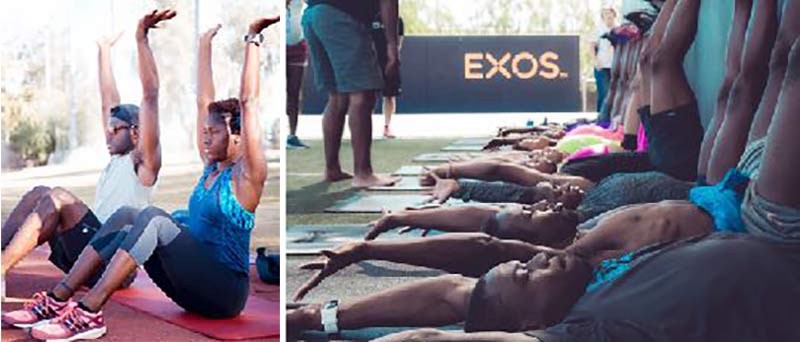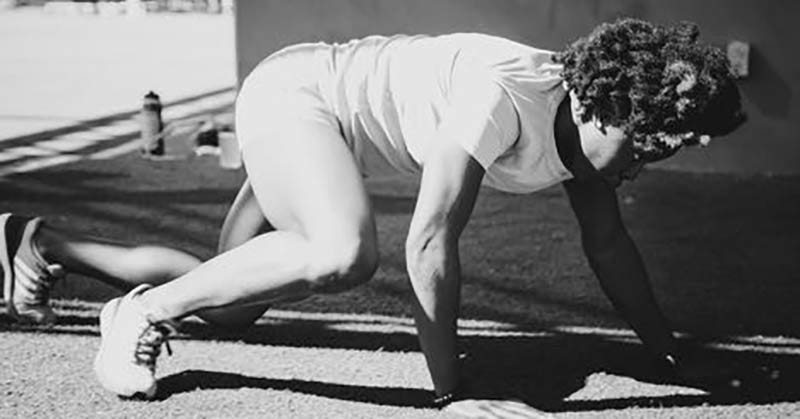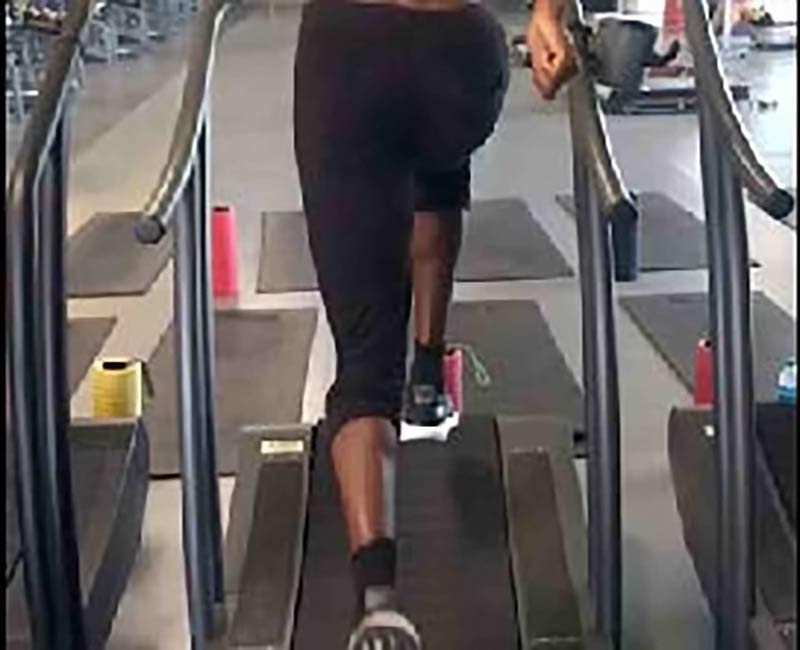[mashshare]


“Most of the things we need to be most fully alive never come in busyness. They grow in rest.”
― Mark Buchanan
Regeneration… We prescribe it in our programs, and our athletes always need it to actualize their training stimulus. Shoot, WE even need it as coaches! But the questions of why, how, and when sometimes gets lost in translation. In this article, we will unpack more of this invaluable part of our training regimen. We will touch on the timing of regeneration weeks and the physiology and psychology behind recovery. We will also give you an important case study for consideration and some tips about practical applications for your athletes.
Rest and respite is a common thread throughout the cycle of life and nature. It is such an important component that is has been prominently discussed by philosophers like Schopenhauer—”sleep is the source of all health and energy”—and portrayed by some of mankind’s most famous artists, such as Picasso, Monet, Dali, and Van Gogh.

Timing
Most of the coaches here at ALTIS used to work in four-week cycles, mainly because it worked well around a calendar. This would be three weeks on and one week off. However, through consistent observation over several years from a number of different coaches, we found that most injuries happened during the third week, while athletes tried to push through that week. We now work in three-week cycles, with a very deliberate reduction in volume and density on the third week.
We found that most injuries happened in the third week of trying to push through training tired. Share on XIntensities are kept high in key areas to continue patterning and stabilization. For the sprints and hurdle group, the overall load in Week 1 Introduction is at 75%, with Week 2 Exploration being the highest and most strenuous at 100%. Week 3 Stabilization drops off to 50% of volume. Week 3 is designed to be short and specific, and training days are also reduced from six to four. This concept of loading carries through from daily structure to micro- and macro-cycles in the programming (Fig. 1).
Intensities are kept high in key areas to continue patterning and stabilization.

The Physiology of Regeneration
Where we come unstuck is understanding and teaching the importance of the ‘down week.’ Share on XMany of us are familiar with the work of Hans Selye, a Hungarian endocrinologist who pioneered the idea that stressors were non-discriminatory. For example, this concept means our bodies and hormonal systems don’t know the difference between the stress of a hard workout of 200-meter reps, and the stress of a big fight with our significant other. We essentially react to stressful stimuli the same way, no matter what the stressful environment is.
The result of these reactions is an increase in the sympathetic nervous system (SNS), which we all know more commonly as a “fight or flight” response. The opposing end of this response is an engagement of the parasympathetic nervous system (PNS), which is less known as the “rest and digest” response.

Most athletes (and coaches) are pretty good at prescribing training with the appropriate density and volume, and effective progressions in complexity and intensity. Where we come unstuck is understanding, and teaching, the importance of the “down week.” Figure 2 above is Selye’s graph on a response to stressful stimuli. Note the exhaustion part of the graph, where the body simply can’t respond to the stressor anymore. This is seen at the end of a hard training session, but also on a larger scale when the athletes do not respond positively to the training stimulus. Having athletes induce and allow a PNS state is necessary for adaptation, as well as the increased conditioning and performance that will follow.
Mental Regeneration
“Activity and rest are two vital aspects of life. To find a balance in them is a skill in itself. Wisdom is knowing when to have rest, when to have activity, and how much of each to have. Finding them in each other―activity in rest and rest in activity―is the ultimate freedom.” – Sri Sri Ravi Shankar
Rest week is not only for physical de-loading and recuperation. It is also vital for mental and cognitive respite. As coaches, we sometimes forget how much is going on in the heads of our athletes, especially when doing new workouts, trying different technical “cues,” or just digging into the well of motivation to get through a tough session.
As such, during our third week in the cycle we make a conscious effort to limit our cueing and feedback to the athletes in practice. We allow them to work on realizing concepts we have introduced and worked on the previous two weeks. As coaches, this allows us to see how far along an athlete is with stabilizing certain qualities and gives them a much-needed mental break from processing technical feedback.
Sleep is, by far, the most important aspect of this cognitive strain on athletes during the realization phase of the cycle. In the well-known Stanford Sleep Study, an extension in sleep duration had a significant effect on the sprint performance, motor skill performance, and mood state of a group of basketball athletes. All the athletes improved in all the measures, and the study reinforced the need to get sleep, and a lot of it. The recommended amount of sleep that athletes need for proper recovery and regeneration is more than nine hours per night, which can also include some small naps during the day. Good sleep hygiene is incredibly important for athletes, especially in an age when most of them spend hours a day on their phones or computers.
A Break for the Staff
You are no good to anybody if you manage to completely burn yourself out.
Coaches need rest too! Rest week should not only be for athletes. The reduction in training days and decreased trackside feedback also benefits the coach and support staff. It is important we ensure that we don’t flame out midway through the year by keeping the “pedal to the metal” at all times. Track is a very involved sport, and coaching is a very involved profession. Make sure to take a little time for yourself once in a while. You are no good to anybody if you manage to completely burn yourself out. I am sure most coaches reading this can relate.
A Case Study of Individuality
Each athlete is a unique organism with individual strengths, weaknesses, and skill sets. Not every athlete responds to, and recovers from, all training item menus in the same way. Not all athletes enjoy the same training menu items equally. As part of the process of getting to know your athletes, start building a training profile based on what type of work crushes them the most. That way, the reduction in volume and density during a rest week can center around the most taxing training elements in respect to a given athlete.
For example, 400-meter hurdler Jeshua Anderson trained with us for two years. He is a running machine. He challenged how far I could take sadistic interval workouts and crushed them all. Clearly, this type of work is in his wheelhouse—he thrives on smooth, steady running. What left him more drained was the speed and speed endurance type work. Aries Merritt is the opposite—he thrives on more acceleration- and speed-related work, but his body doesn’t take to interval work too kindly. I am sure what I just described also has a massive influence on the respective athletes’ event choices. Jeshua is a physiological monster, whereas Aries is a neurological demon.
Jeshua and Aries are both willing to put in work in the training areas they dislike. However, this should give us a clue as to how to slant their training and how to possibly de-load them for a rest week. Reduce the elements that are physically and mentally most draining for the athlete. Script workouts that they are good at and enjoy more. You will get a much better response despite some loading fatigue, not stress them out as much, and have better bounce-back in the following weeks. When you give them a break from their most dreaded workout elements, they are more willing to attack these again in the following cycle. Athlete makeup should be a consideration. Therefore, we kept steady interval work in on rest weeks for Jeshua, while substantially reducing that element for Aries. Conversely, we kept sprinting work in for Aries while taking it out for Jeshua.
Some of the most common misconceptions about regeneration and a week of reduced volume are what, when, and how much. An important concept that we try and teach our athletes is to have the appropriate arousal level for an activity. On a normal week, we have two designated sessions with a goal of movement with low arousal. This can be harder than it seems, as you always want quality of movement, but without the stress of intensity and too much front brain activity and analysis. It should be restorative, usually slow to medium in speed, and “easy” for the athlete. Athletes often have a hard time grasping this concept of not “working hard” in a session, but once they see the benefit over time, it should start to make sense.
Here is a checklist of what a “regen” session should encompass:
- Parasympathetic nervous system dominance
- Familiar movements through large, but comfortable ranges
- Inclusion of all joints and planes of movement
- Controlled, natural, and purposeful movements
Some of the key active modalities we work with in our sessions that we find very successful:
- Light medicine ball throws
- Joint self-distraction with bands
- Various crawling series
- Principles of yoga and pilates
- Reduced load running (using Woodway Curve)






Hopefully, we have shed some light on the concept of an effective regeneration week, and you can go forth to recover well with the athletes you train. Remember: The most important aspects of recovery are sleep and nutrition. Without these, you will see frustration from the athlete and feel frustration as a coach. Keep things simple and consistent. Good luck!
For more coach and athlete resources from ALTIS, see ALTIS 360.Since you’re here…
…we have a small favor to ask. More people are reading SimpliFaster than ever, and each week we bring you compelling content from coaches, sport scientists, and physiotherapists who are devoted to building better athletes. Please take a moment to share the articles on social media, engage the authors with questions and comments below, and link to articles when appropriate if you have a blog or participate on forums of related topics. — SF
[mashshare]





3 comments
Rob Assise
Excellent article!
Do you feel the 2 on 1 off approach applies for non-elites as well? In my case, this would be high school athletes.
Noble Living
“coaching is a very involved profession. Make sure to take a little time for yourself once in a while. You are no good to anybody if you manage to completely burn yourself out. I am sure most coaches reading this can relate.”
Absolutely! Energy is constantly exchanging between athletes & coaches, if you are unable to shut it down your nervous system becomes overloaded. Not a day goes by that I’m not taking that well needed quiet time to allow my cranium to bath the brain in its own sensory deprivation tank & once a week I do something that grounds me.
Joel Smith
Great article